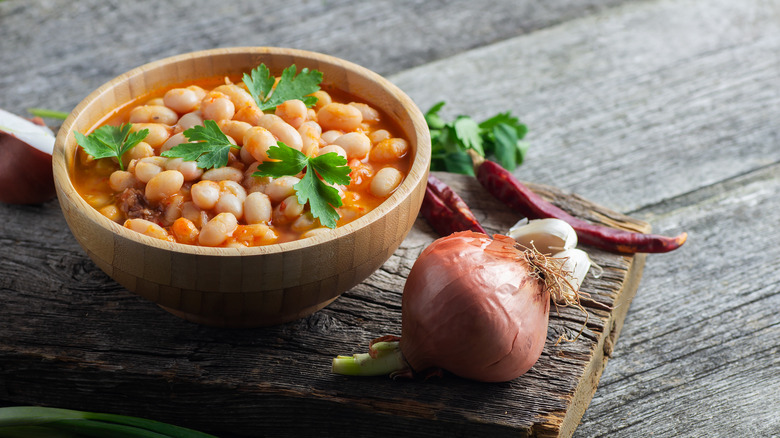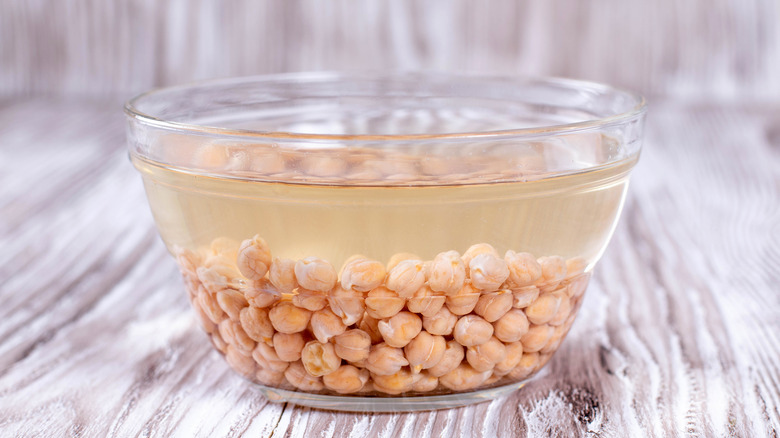Why It's A Bad Idea To Cook Beans In The Water They Were Soaked In
Beans are an inexpensive, versatile, protein-packed pantry staple that are always a good idea to keep stocked at home — whether you opt for the canned or the dried variety. We love incorporating the legumes into a variety of dishes, from hummus to red beans and rice to spicy black bean soup. And while there's really no beating canned beans when it comes to convenience — after all, what could be easier than popping open a can, draining and rinsing the beans, and adding them to your favorite dishes? — many cooks, both amateur and professional alike, recommend using dried beans for their superior taste and texture.
Clean Plates writes that dried beans tend to taste fresher, with a fuller flavor, and can be cooked until just-tender, instead of the fairly mushy texture of beans that come in a can. Meanwhile, the New York Times says that although dried beans aren't difficult to make, they tend to need to be soaked for at least a few hours before cooking, especially if that bag of beans has been kicking around the store shelf for a while. Just make sure to drain the beans and discard the soaking water before cooking them.
Beans, beans, the incredible fruit
We're all familiar with a somewhat undesirable side effect of eating lots of beans, and that's the fact that they can cause indigestion and gas. According to Healthline, beans contain a compound called raffinose, a non-digestible carbohydrate that passes into the large intestine, where it's fermented by gut bacteria. The byproducts of that fermentation process include methane, hydrogen, and carbon dioxide gasses, which cause flatulence.
But if you love beans, don't despair: According to Mayo Clinic, soaking, simmering, and canning beans are all processes that help break down the raffinose in the legumes, making them easier to digest. In the case of soaking, the site explains, the water will absorb some of the raffinose, leaving the legumes more digestible as the quantity of raffinose is reduced. But that's exactly why you don't want to simply transfer your pot of soaked beans to the stove and start cooking them: By cooking the legumes in their soaking water, you'll ultimately still be ingesting the raffinose that transferred to the water.
Instead, Mayo Clinic recommends not only changing out the beans' water several times over the course of soaking, but also discarding that water and cooking the beans in fresh water when it's time. With these helpful soaking tips, your next pot of beans should go down easy.

